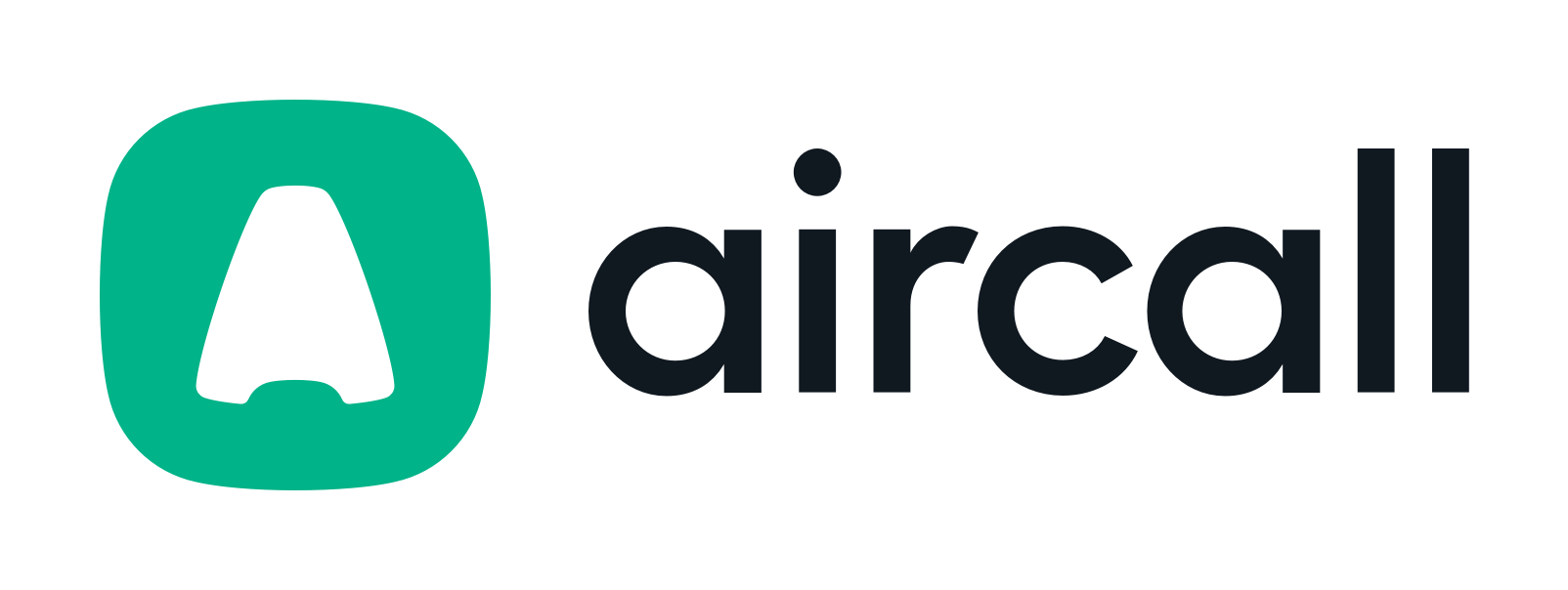![B2B Sales: Everything You Need to Know & More [Guide]-festured-image](https://6052405.fs1.hubspotusercontent-na1.net/hubfs/6052405/2024%20-%20Blog/EN%20SEO%20blogs%20%28Scaling%20keywords%29/B2B%20sales/b2b-sales-card.png)
11 Ways to Increase Outbound Sales Calls [Not Activity Metrics]

What's on this page:
Outbound calling (also known as a cold call) is the staple tactic for many successful B2B businesses 🤑
But what really makes a difference is how you approach it.
Here, we’ll provide helpful ways to increase outbound sales calls in your sales team. From showing your team what success looks like to keep them motivated.
- Show your sales team what success looks like.
- Sales enablement and incentives.
- Research before dialing.
- Access the right data.
- Listen to calls and feedback.
- Keep the focus on the prospect.
- Use a script as a guide.
- Don’t shy away from talking about competitors.
- Be prepared for objections.
- Work on your cold calling fear.
- Detach from the outcome.
11 ways to increase outbound sales calls
Developing an effective outbound calling strategy requires planning and iteration.
Your strategy will likely look different in a few years from when you just started. And every SDR has a different style, so what works for one may not work for another.
Below are ways to increase your (or your teams’) outbound sales calls. Let’s dive in. 👇
1. Show your sales team what success looks like
SDRs are successful when they know what success looks like.
Mark Ackers, Co-Founder at MySalesCoach puts this well:
“If you can go with someone that’s walked in your shoes, they’ve done that journey, then their history is your future. That means you’ll get to where you want to get to quicker and make fewer mistakes. Working with a coach who’s already done that is a sure way to get there effectively.”
Ensure that your sales team knows what is expected at every step.
But don’t just pile on activity-based goals and track them on a dashboard. You shouldn’t base a rep’s performance on how many dials they make.
Instead, focus more on value-led selling metrics like:
- Meaningful conversations. It’s not just about booking meetings. It’s about uncovering challenges, understanding solutions and building lasting relationships.
- Quality over quantity. Shift from a high-volume approach to interactions driven by value. Don’t fixate solely on what enters the sales funnel.
- Multi-threading. Instead of just chasing meetings, reward your team for involving multiple personas early in the process. More stakeholders mean more leverage and opportunities.
2. Sales enablement and incentives
A winning sales enablement program is all part of building an outbound sales team.
According to Will Falkenborg, SDR Lead at Champify, peer-to-peer learning is the way to go.
Here’s how he and his team do it:
“What we do is we’d go as hard as we could sitting next to each other knowing that the other person is dialing when we’re not.”
“The fun thing about that type of relationship is that we would give each other tips on our cold calls and emails to improve each other and spin the flywheel for the both of us.”
A culture of knowledge sharing is key, particularly if your team consists of newbies and more experienced SDRs.
And when it comes down to incentives, they don’t always have to mean cash. 💰
You could give away tickets to a big game or concert or free subscription boxes. The world is your oyster.
3. Research before dialing
Research is the golden ticket for your team’s outbound sales strategy. 🎫
Think like this: you wouldn’t head into a big game without knowing your opponent, right? The same goes for sales calls!
Some ways to do this are checking out their website, social media profiles, recent news, or industry updates.
This will help your reps personalize their approach and offer solutions that resonate with the prospect.
Lewis Gadsdon, Founder at SDRs of London, says:
“Research is the biggest thing. You don’t need an abundance. You don’t need to know my life story. You just need something to attach as to why you’re calling me or my company. Just show that you know us and I’m not just another number on your list for the day.”
4. Access the right data
Good prospect data is an important part of increasing your outbound calling success.
Without it, your cold calls will fall flat. Or even worse, you’ll be dialing the wrong people!
A prospecting tool (like Kaspr) is important to have in your outbound sales tech stack. You’ll get instant access to emails, phone numbers, and all the relevant data.
This will mean you and your team will spend less time prospecting and more time speaking to the right people.
Salespeople like Thibaut Souyris are using the Kaspr LinkedIn Chrome Extension to get contact details. Kaspr and his approach has helped Thibaut get a 38% reply rate and an 11% booked meeting rate. 🚀
5. Listen to calls and feedback
Record all your outbound sales calls using software like Gong. You and your sales team will be able to go back and look at what’s working and what isn’t. This could lead you to tweak messaging, trial different cold calling techniques, and really understand what sticks.
Morgan J Ingram, x4 Top Sales Voice on LinkedIn and Creative Advisor at Cognism, highlights the key things sales teams should be focusing on. He says:
“Make sure you record your calls and review them to identify your prospects’ common pain points. Reverse engineer the problem your prospect has and craft your questions based on the problem.”
“Once you have your questions, focus on how you ask them. Instead of starting with ‘what’, say ‘tell me’… This simple swap will help you have a real conversation. ”
6. Keep the focus on the prospect
Remember, when you make an outbound sales call, it’s all about the person on the other end of the line. Not about you or your product.
Personalization is the (not so) secret sauce for success here.
Before picking up the phone, your team should take the time to learn about the prospect’s needs, pain points, and preferences. Then, ask questions, listen attentively, and tailor the pitch to address their concerns.
Callum Beecroft, Sales Recruiter at The Phonejacker® says:
“Nobody likes being told what to do. They want to discover it for themselves. You can’t tell your prospects that they need your product or service. You’ve got to ask the questions to help them see it for themselves. To make prospecting specific to the individual, you’ve got to understand what you need to know [from them].”
When reps make the conversation about the prospect and how they can solve their problems, they’re much more likely to grab their attention and seal the deal.
7. Use a script as a guide
Scripts can be valuable tools for sales calls, providing a framework to ensure important points are covered and conversations flow smoothly.
But the key is to use them as a guide rather than rigidly sticking to a pre-written dialogue.
Encourage your sales team to study the script thoroughly so they can remember key messages and respond naturally to customer reactions.
While scripts may work well for some SDRs, they won’t suit everyone’s style or approach. Finding what works best for each individual within your team is essential.
The goal is to sound authentic and engage in meaningful conversations, not come across as robotic or scripted.
💡 Steal this script structure from Ryan Reisert, Head of Growth at NeonPixel:
- Introduction: “Hi this is YOUR NAME, with YOUR COMPANY.”
- Permission: “Do you mind if I take 30 seconds to tell you why I’ve called?”
- Purpose: “The purpose of this call is…”
- Value pitch: “To find time in your calendar to introduce my company.”
- CTA: “How does next Monday or Wednesday around this time of the day work for you?”
8. Don’t shy away from talking about competitors
Reps shouldn’t be scared to bring up their competitors.
Think about it. Prospects can get all the information they need online, including social proof.
Even if they’re already leaning towards a particular solution, they’ll probably compare options before making a decision. It just makes sense to explore different choices.
So, it’s best if your team can steer the conversation.
Be honest about what your competitors do well and where they fall short. But also highlight what makes your product or service unique and why it’s different from the competition.
Rory Sadler, Co-Founder & CEO at trumpet, suggests bringing the elephant into the room by saying something like this.👇
“So with company X, who you’re likely to look at for these solutions, they are great at doing X, and are known in the market for this. The reason I believe we are a better fit is because you said a key requirement for you is X. This is an area where our customers say we are very strong in.”
9. Be prepared for objections
Objections are a natural part of the outbound sales process.
And how SDRs handle them can make or break a deal.
Instead of viewing objections as roadblocks, they need to see them as opportunities to educate the prospect further and address their concerns.
By demonstrating empathy, providing relevant information, and offering solutions, they can overcome objections and move the conversation forward positively.
Elric Legoire, Global SDR Manager at Agorapulse, shares his advice on how to handle sales objections like a pro:
“Don’t take objections at face value. Instead, explore the reason behind the objection. Your goal is to understand your prospect’s perspective.”
“Ask questions like ‘Is it because of bad timing?’ or ‘Are you happy with your current solution?’ And finally, start a conversation. This approach shows respect for the prospect and opens a door for a more meaningful dialogue.”
10. Work on your cold calling fear
Cold calling can be intimidating. 💯
But it’s the most valuable tool for generating leads and expanding your customer base.
SDRs need proper training and coaching to overcome the fear of cold calling.
As well as the right mindset and resilience to view rejections as learning experiences rather than personal failures.
Mark Ackers breaks this down into training, mindset and call coaching. 👇
Training
So many companies have training wrong. Too much time is spent on product details and marketing messaging. Not enough time is spent actually understanding the persona.
Sales reps need to know this about their personas:
- What their job involves.
- What matters to them.
- What their prospects complain about.
Only by completely understanding the persona can reps speak in a way that resonates with them.
Mindset
Most people, when calling, think about themselves. When you need to recognize it’s far worse for the person on the other side.
If you call someone, you have made that decision and have a lot of background info on them. The person on the other side has no clue who you are, what you want, how you got their number.
All of this can cause anxiety.
If you’re also anxious, you have two anxious people on the phone, which causes friction.
Sales reps need to go into each call with the mindset:
“I’m seeing if I can help. Some people will want my help now, some not now but later, and some will never want my help. That’s fine, I’m okay with that.”
Call coaching
The average cold call has 5000 words, and it’s not just what you say; it’s how you say it.
Mark once coached a call that only lasted about three minutes. Within a minute, he stopped the call about ten times. Picking up these micro-moments can accumulate into a much better call.
Cold calling is a skill. You can get there by yourself, or you can work with someone who’s been there and done it, made the mistakes.
Regular call coaching is key to taking your cold calling to the next level.
11. Detach from the outcome
Getting on the phone is not all about booking a meeting.
It’s about having a productive conversation and not getting hung up with the structure of it.
Chris Russell, Senior SDR at Allego says:
“If you go on a call with the pressure of ‘I have to get a meeting out of this one’, you end up jeopardizing it and treading on your own toes. So just take a step back and just have a conversation.”
“And to do that, you need to be relaxed and not make too much of a point. That will come with the more conversations you have and the more you push yourself through the awkward part.”
Remember, not every call will result in a sale, and that’s okay.
Each interaction is an opportunity to learn and improve.
By detaching from the outcome, SDRs will be able to approach each call with a fresh perspective and increase their chances of success in the long run.
Why is outbound calling important?
Outbound calling is all about reaching out to prospects without prior engagement or communication. It’s a technique used by sales development representatives (SDRs).
What makes the cold call an essential part of your B2B outbound sales strategy is one key element. Human interaction. 👋
It’s used with other channels, such as cold emails and social selling on LinkedIn. All as part of a good multi-touch sales cadence.
Outreach like this is all about building a valuable relationship with your prospects.
Ayo Akinduryo, Manager, Business Development EMEA at Envoy says:
“People will always yearn for that opportunity to mix with other humans. So as much as technology is advancing, there will always need to be that human touch.”
“We can automate processes to make things run smoother for the human, but it will not replace the human.”
Other reasons why cold calling is important for your outbound sales success are:
- Find out immediately if a prospect is interested.
- It is the start of a relationship.
- Put out a consistent message.
- There’s an opportunity to learn.
- Get an edge over your competitors.
- It’s measurable.
- It’s a cost-effective outbound sales channel.
- A super-quick way for reps to understand your solution and the problem it solves.
How to keep your sales team motivated
Being an SDR is a high-pressure role.
Experiencing rejection, handling objections from prospects, and not hitting quota can make staying motivated challenging.
As a B2B sales leader, you need to understand what’s causing it. Owen Richards, Founder & CEO of Air Marketing spoke about his SDR team; he says:
“Let’s say their activity has dropped by 20% compared to last month - present them with a graph showing this and ask them what’s causing it.”
“Usually, you’ll get a straight answer. If they’ve been distracted, it’s normally something like marketing asked them to contribute to a project or they spent two days at an expo. Sometimes reps might not even realize there’s a problem.”
“Then you ask them a simple question: What can they do to improve this month? Get the SDR to suggest their own solutions. People are more likely to adopt change if it’s their idea, rather than you telling them what to do.”
Callum Beecroft explains how you can make cold calling work for your team in the clip below 🎬
James Ogilvy, SDR Manager EMEA at SalesScreen advises his sales team always to celebrate small wins.
“If you’re not having a good week or month, it’s about trying to find those small wins where you can say that you’ve done something faster or better than before.”
“I really care about recognition. When people tell me I’m doing a good job, I’ll go a hundred miles more.”
Negative slumps are hard to bounce back from. But according to Morgan J Ingram, there are six ways to overcome them:
- Step away from work.
- Keep a steady mindset to be successful.
- Remember, you are great, look back at previous wins.
- Listen back to your calls.
- Look at your KPI metrics.
- Look back at your goals when you feel you’ve lost motivation.
FAQs about outbound sales calls
What is outbound sales?
Outbound sales is a proactive approach where sales representatives reach out to potential customers to introduce products or services, generate leads, and ultimately book a meeting.
Instead of waiting for customers to come to them, outbound sales teams take the initiative to seek out opportunities.
It involves initiating contact with prospects through phone calls, emails, or other communication channels to offer solutions tailored to their needs.
What are the types of outbound calls?
There are a few different types of outbound calls:
- Cold calls. These are calls made to prospects who haven’t shown any prior interest in the product or service.
- Warm calls. These calls are made to potential leads who have shown interest, like signing up for a newsletter or downloading a whitepaper.
- Follow-up calls. After initial contact, follow-up calls are made to nurture leads and move them further along the sales funnel.
- Customer win-back calls. These calls target former customers with the aim of re-engaging them and bringing them back into the fold.
How to measure outbound sales calls?
Here are some of the KPI metrics for sales leaders to consider:
- Conversion rate. Analyze the conversion rate of meetings booked to deals closed. This provides insights into the effectiveness of your team’s outbound sales efforts in turning prospects into customers.
- Number of dials. Track the average number of calls made by your team and how it evolves. If you notice weekly drops, there might be underlying problems. Take a closer look at these metrics and the reasons why, and adjust your management.
- Cold call duration. This is the average duration of the entire call. From the time the SDR initiates the call, to hang up. Longer calls are great for looking back and reviewing what the prospect has said. It’s likely that an SDR has uncovered a pain point that’s often experienced by your ICP.
- Follow-up engagement. Measure the engagement and responsiveness of prospects post-meeting. Are they actively engaging with your sales team? Are they showing interest in further discussions or moving forward in the sales process?
How do you make a good outbound sales call?
Making a good outbound sales call involves a few key steps:
- Research. Prior to making the call, research the prospect and their business to understand their needs, challenges, and pain points.
- Personalization. Tailor your approach to each prospect based on the information gathered during research. This could involve referencing specific challenges they face or the industries they operate in.
- Clear value proposition. Clearly articulate your product or service’s value and how it can address the prospect’s needs and challenges.
- Active listening. Listen attentively to the prospect’s responses, concerns, and questions. Engage in a two-way conversation rather than delivering a scripted sales pitch.
- Persistence. Be persistent in your efforts to engage the prospect, but respect their time and boundaries. If they express disinterest, gracefully thank them for their time and move on.
- Follow-up. If the prospect isn’t ready to make a decision immediately, schedule a follow-up call or email to continue the conversation and provide additional information or support as needed. Regular follow-up is key to nurturing relationships and staying top-of-mind with prospects.
Just keep dialing
There’s definitely an art to the cold call.
SDRs are thrown right in at the deep end, but the key is just to keep dialing ☎️
As a sales leader, you need to know how to increase outbound sales calls, too.
Here’s a summary of the key points:
- Show your team what success looks like by focusing on quality over quantity.
- Invest heavily in sales enablement; it will pay off in the long run.
- You won’t get far with bad, inaccurate or unreliable data, so invest in good prospecting tools.
- Review your teams’ cold calls and give them feedback.
- Focus on the prospect and how reps can help them.
- Find what works best for each individual in your team.
- Don’t be afraid to bring up competitors.
- Show reps how to handle objections by turning them into a meaningful dialogue.
- Reduce your team’s cold calling anxiety with proper training, coaching and mindset shift.
- Know how to motivate every SDR in your team.
Accurate European contact data
Get accurate data for your prospects and connect with your favorite sales tool









